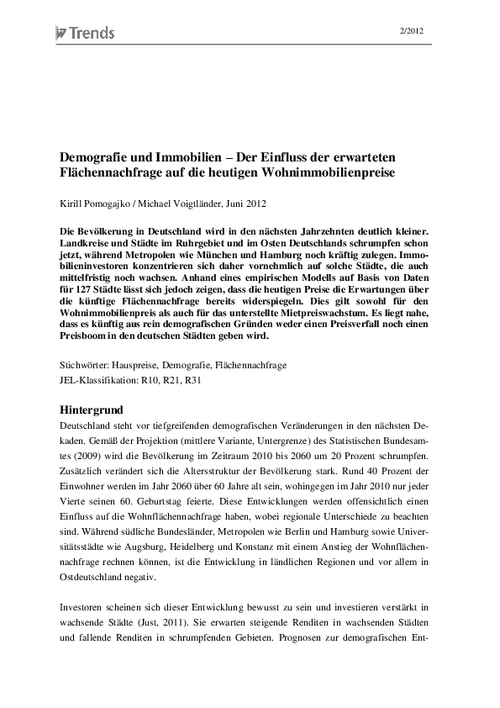The Influence of Expected Demand on Today’s Residential Property Prices

Demography and Real Estate

The Influence of Expected Demand on Today’s Residential Property Prices
Germany’s population is set to decline in the next few decades. Rural counties and cities in the Ruhr valley and eastern Germany are already shrinking, while metropolises such as Munich and Hamburg continue to experience strong growth. Real estate investors are therefore largely concentrating on cities that are expected to continue growing in the medium term. However, using an empirical model based on data for 127 cities, it can be shown that today’s prices already reflect expectations of future real estate demand. This applies both to the price of residential property and the assumed growth in rents. It can thus be concluded that, as far as purely demographic factors are concerned, real estate prices in German cities will neither dramatically decline nor soar.
Download | PDF

Demography and Real Estate

More on the topic

Possible Developments in the Supply of Skilled Workers up to the Year 2040
The German labor market is on the verge of a fundamental upheaval. While the number of people in the labor force has risen steadily in recent decades, it is likely to drop significantly as soon as the baby boomers retire.
IW
The Social Situation of Young People from Non-German-Speaking Families
An analysis of the microcensus shows that in 2017, around 2.4 million children and adolescents in Germany lived in non-German-speaking households. This corresponds to 17.7 per cent of all minors (under the age of eighteen) and 47.0 per cent of those with a ...
IW